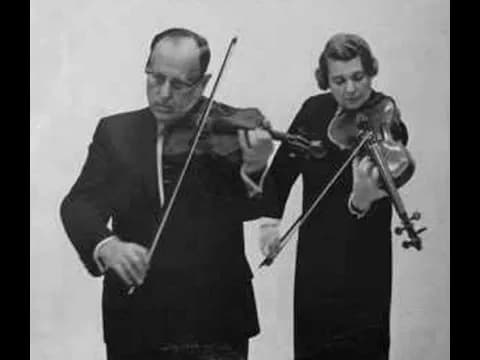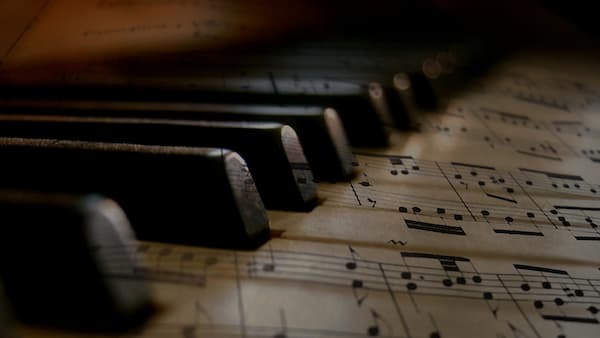Bohuslav Martinů (1890-1959), the younger compatriot of Czech composer Leoš Janáček (1854–1928), was much more widely traveled than Janáček, largely due to the wars of the 20th century. Martinů, living in Paris in 1940, emigrated temporarily to Portugal and then to the US when the Germans invaded France. During the war, he largely wrote symphonic music (Symphonies 2 through 5) but a serious fall after the war prevented his return to Europe until 1948. During his convalescence, he worked on smaller forms, including the Three Madrigals he wrote in 1947 for the brother and sister string duo, of Joseph (violin) and Lilian (viola) Fuchs.

Joseph and Lilian Fuchs

Bohuslav Martinů, 1945 (Centrum Bohuslava Martinů)
The Fuchs’ performance of Mozart’s duos for violin and viola inspired Martinů to write for the difficult combination of instruments. The two instruments are close in pitch and have subtle differences in sound and Martinů’s true accomplishment was his ability to make the sound so rich. The work poses virtuosic-level challenges in both technique and coordination between performers.
In these works, the core element are Renaissance madrigals, which had a freedom from conventional forms, a variety of textures including equal-voices counterpoint, and rhythm that was free from bar lines. Combining those elements with Eastern European / Bohemian-Moravian folk music themes and dances and the use of the pentatonic scales, Martinů created a modern version of the madrigal.
In the first movement, Poco allegro, is rather like a two-part invention, which pulls the listener forward with its momentum. The speed increases at the coda. You’ll hear snatches of melodies that are familiar from Janáček’s American Quartet and perhaps a bit of jazz from Martinů’s 1920 jazz experiments.
Bohuslav Martinů: Duo No. 1, H. 313, “3 Madrigals” – I. Poco allegro (Eugene Drucker, violin; Lawrence Dutton, viola)
The second movement is a slow Andante, which gives Martinů the chance to expand his melodic ideas. It opens in a free style, filled with muted trills and tremolandos. Virtuoso scale and arpeggio passages follow to culminate in a very Martinů-like melody.
Bohuslav Martinů: Duo No. 1, H. 313, “3 Madrigals” – II. Poco andante (Eugene Drucker, violin; Lawrence Dutton, viola)
The finale is a dance-like Allegro, interrupted in the middle with a short Moderato section, which is Martinů’s closes bow to the Renaissance madrigal style. The outer fast sections are filled with syncopations that not only recall some of Mozart’s fast sections but also the irregular pulses of both his beloved Renaissance madrigals and perhaps a bit of modern jazz.
Bohuslav Martinů: Duo No. 1, H. 313, “3 Madrigals” – III. Allegro (Eugene Drucker, violin; Lawrence Dutton, viola)
As post-war pieces, these reflect both Martinů’s happiness that world was at peace, and his memories of home, when his travels were restricted by his health. In 1950, he wrote another set of duos for the Fuchs’ (Duo No. 2, H. 331) but it has never been as popular as the 1947 set.
For more of the best in classical music, sign up for our E-Newsletter



